

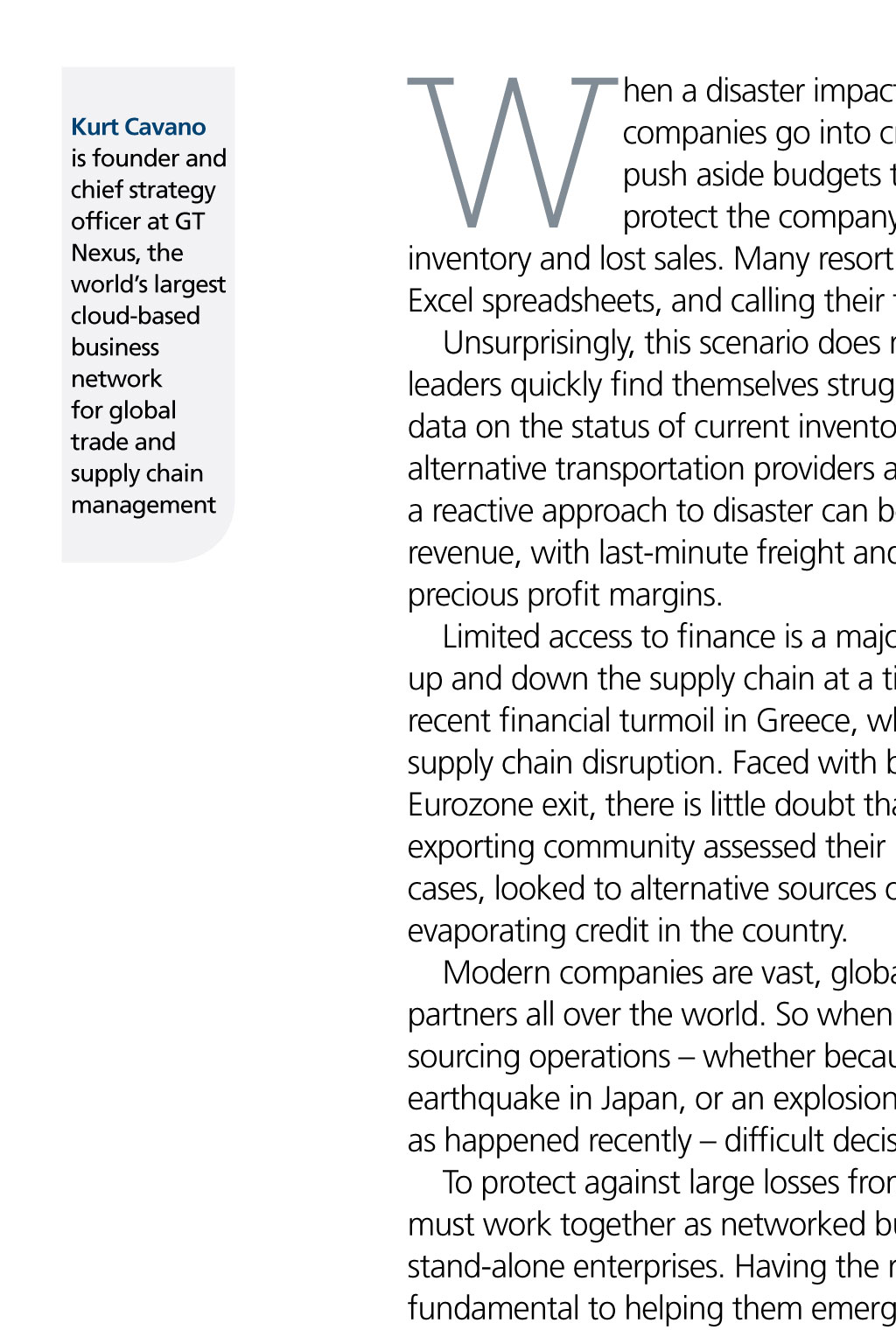

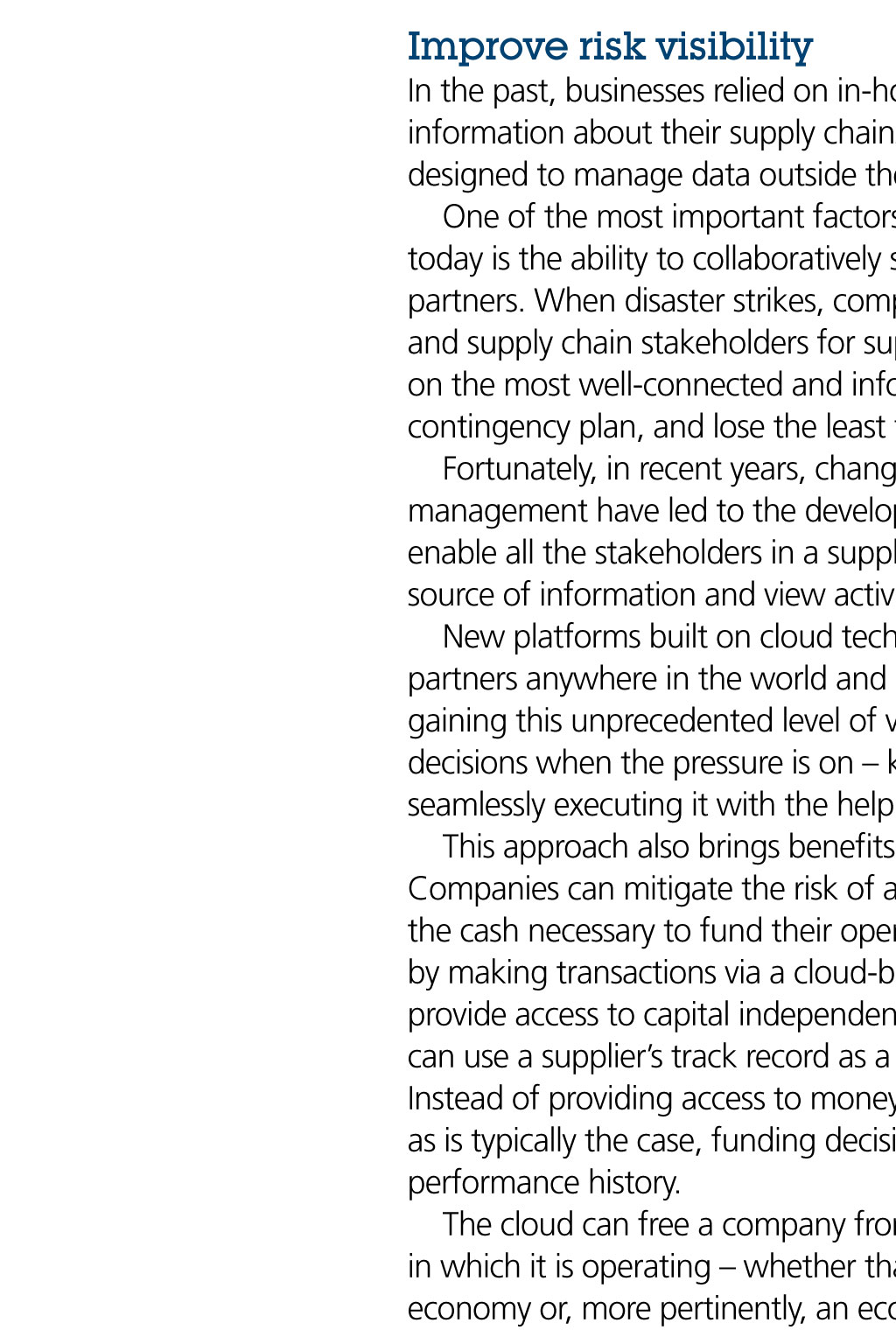
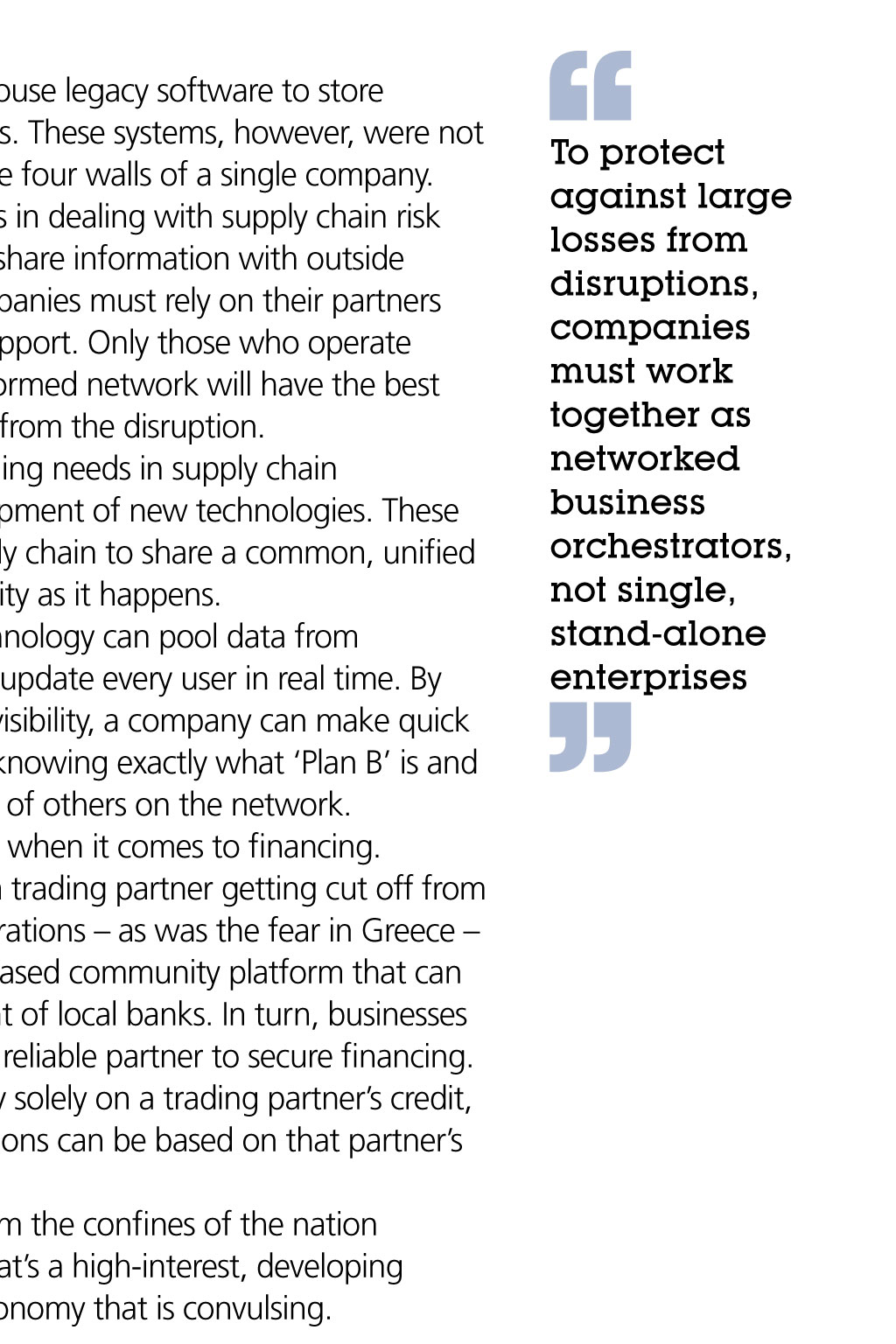
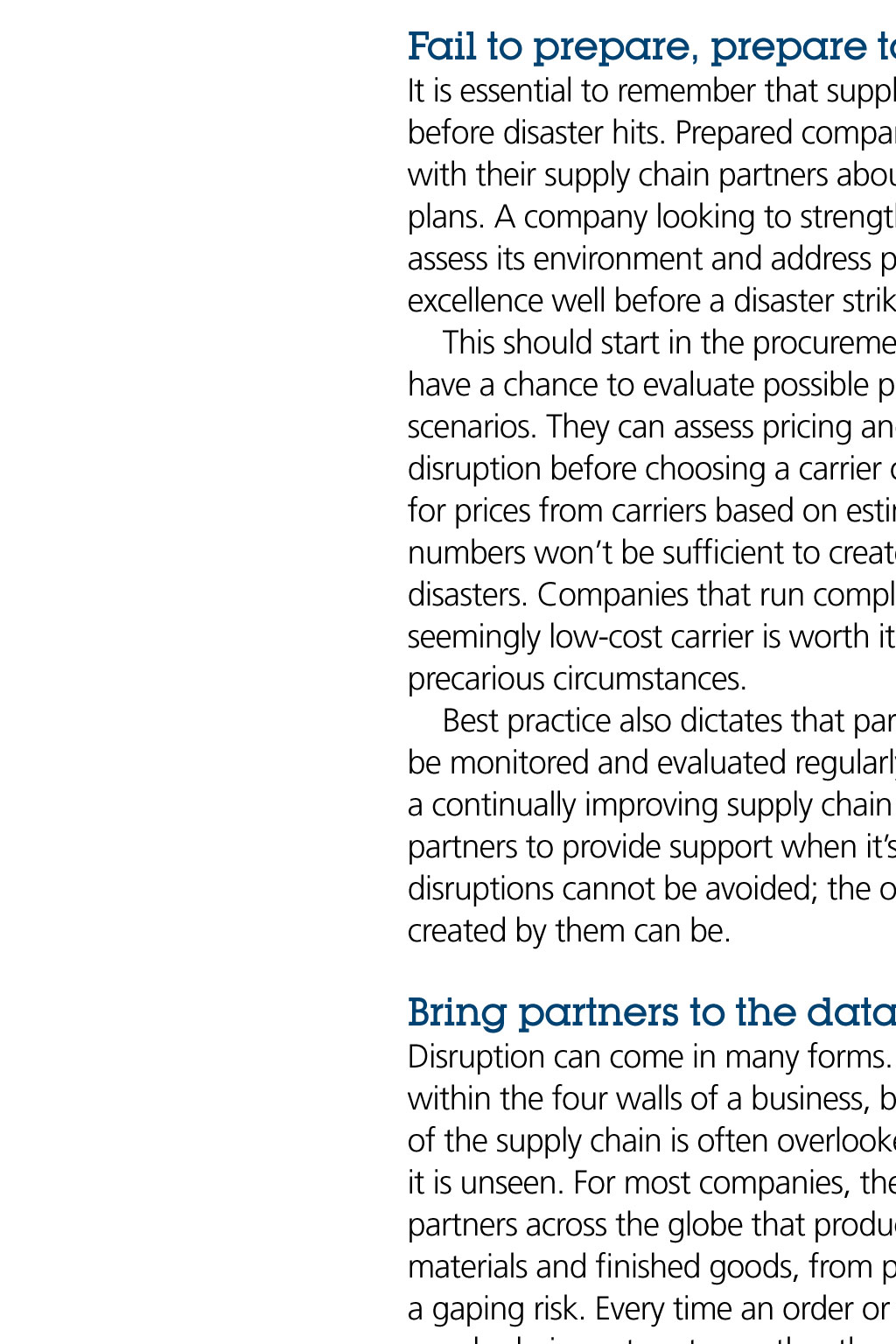
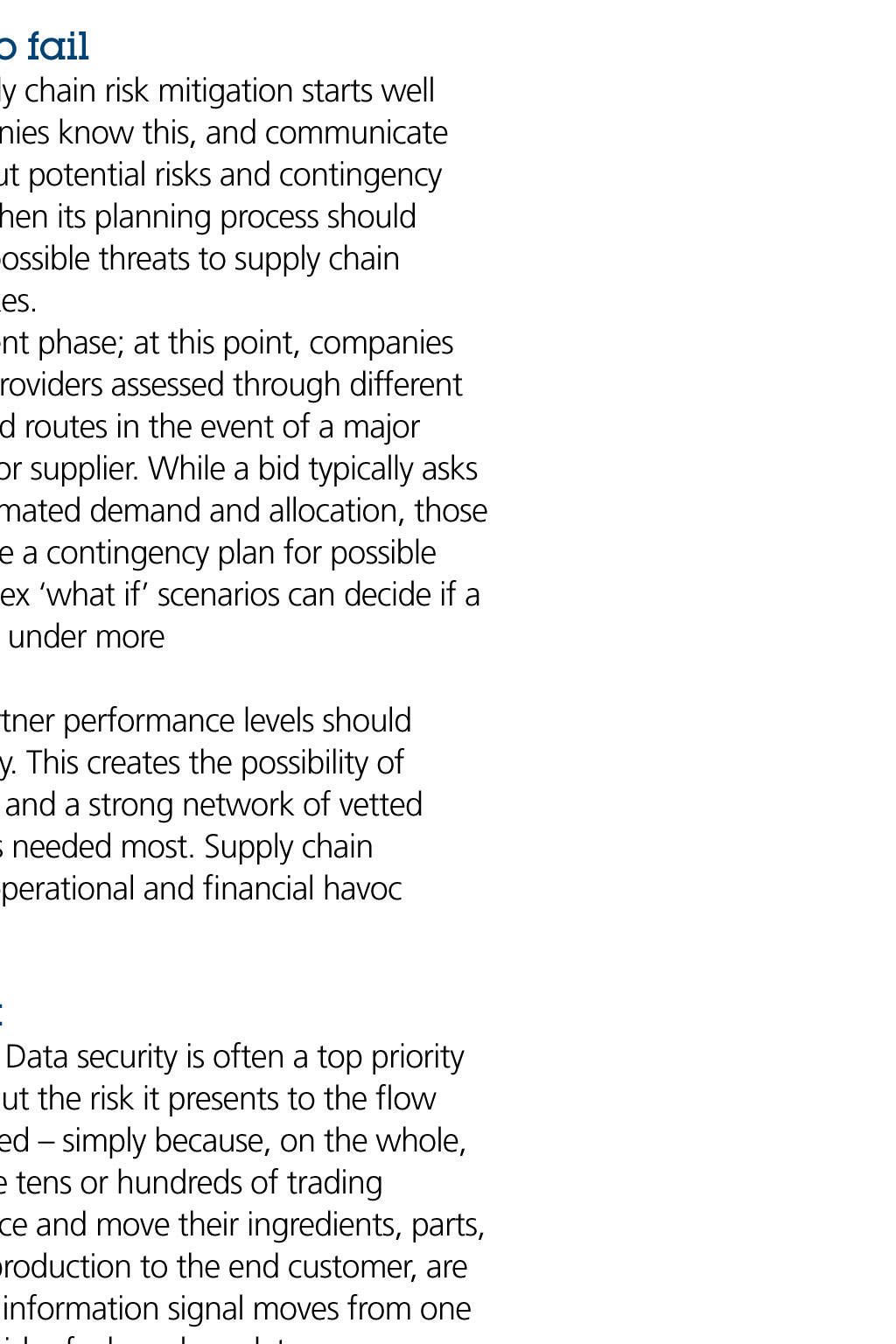
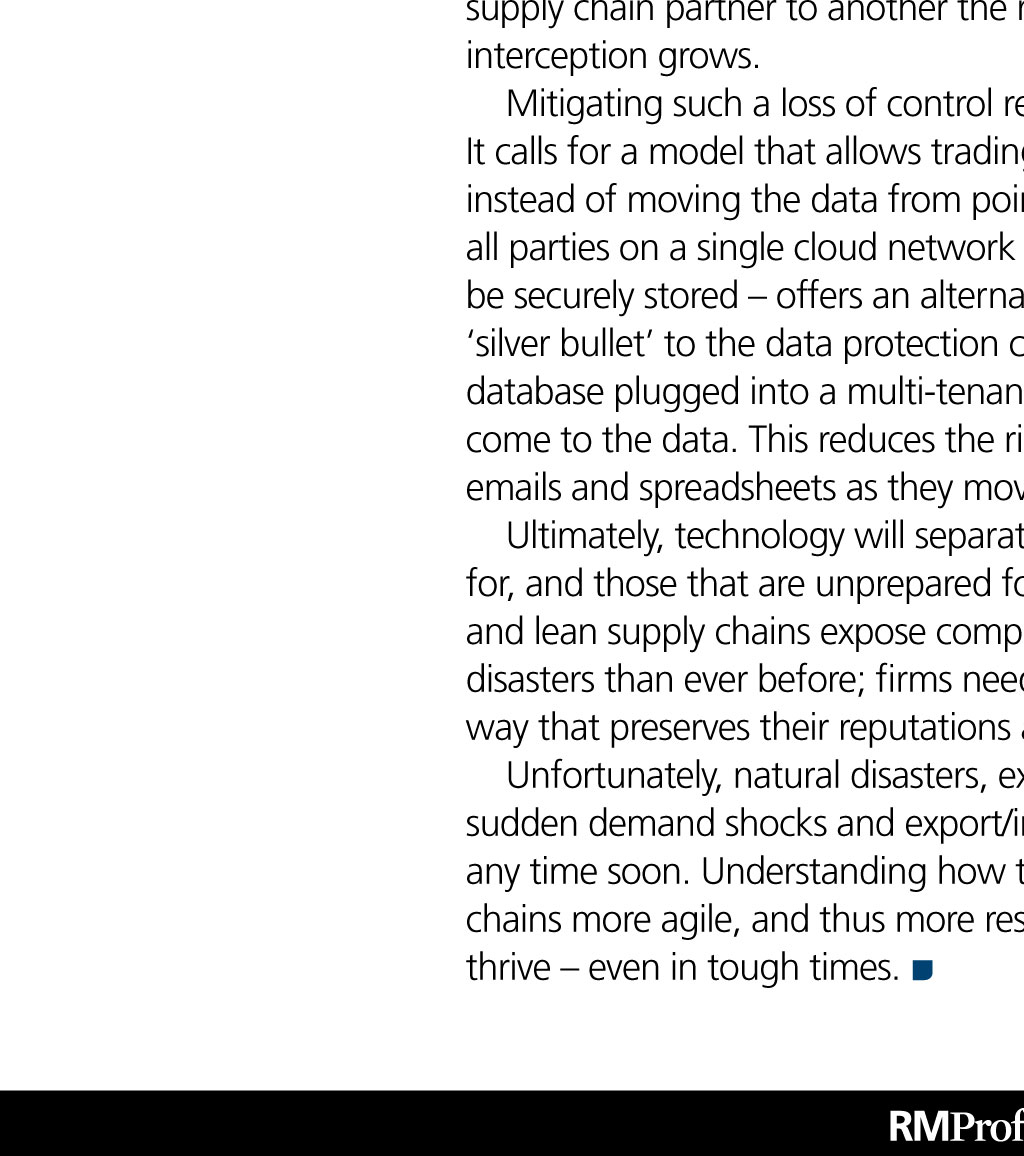
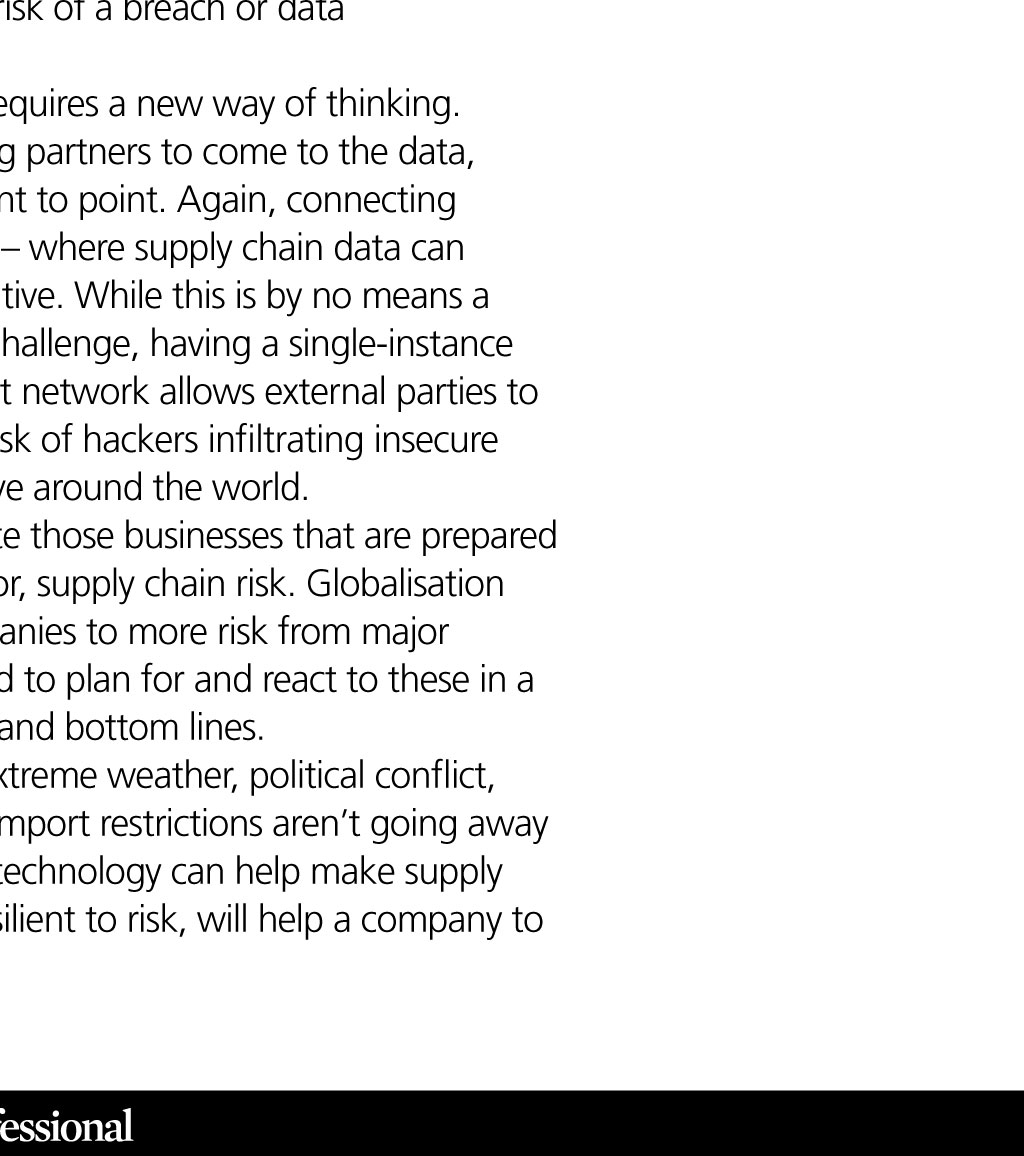










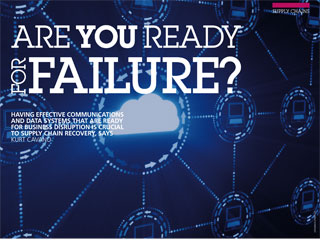
suppLy ChaIns aRe yOU Ready fOR FAILUre? 3dreAms/shutterstocK HAvInG EffECTIvE COMMUnICATIOnS AnD DATA SySTEMS THAT ARE READy fOR BUSInESS DISRUPTIOn IS CRUCIAL TO SUPPLy CHAIn RECOvERy, SAyS KURT CAVANO kurt Cavano is founder and chief strategy officer at GT Nexus, the worlds largest cloud-based business network for global trade and supply chain management W hen a disaster impacts on global trade and commerce, companies go into crisis mode. All too often, executives push aside budgets to make any moves necessary to protect the company against stopped production, late inventory and lost sales. Many resort to shuffling paper, looking through Excel spreadsheets, and calling their trading partners, one by one. Unsurprisingly, this scenario does not usually end well; business leaders quickly find themselves struggling to locate, in a timely fashion, data on the status of current inventory, production, or availability of alternative transportation providers and suppliers. The costs from such a reactive approach to disaster can be greater than the potential lost revenue, with last-minute freight and haphazard sourcing eating up precious profit margins. Limited access to finance is a major issue that can cause ripple effects up and down the supply chain at a time of crisis. Take, for example, the recent financial turmoil in Greece, which bears all the hallmarks of typical supply chain disruption. Faced with bailout uncertainty and a rumoured Eurozone exit, there is little doubt that businesses reliant on Greeces exporting community assessed their level of exposure and, in some cases, looked to alternative sources of supply to counteract the risk of evaporating credit in the country. Modern companies are vast, global organisations that rely on partners all over the world. So when a crisis shuts down part of their sourcing operations whether because of an economic meltdown, an earthquake in Japan, or an explosion at a chemical warehouse in China, as happened recently difficult decisions have to be made. To protect against large losses from such disruptions, companies must work together as networked business orchestrators, not single, stand-alone enterprises. Having the right technology in place is also fundamental to helping them emerge unscathed. Improve risk visibility In the past, businesses relied on in-house legacy software to store information about their supply chains. These systems, however, were not designed to manage data outside the four walls of a single company. One of the most important factors in dealing with supply chain risk today is the ability to collaboratively share information with outside partners. When disaster strikes, companies must rely on their partners and supply chain stakeholders for support. Only those who operate on the most well-connected and informed network will have the best contingency plan, and lose the least from the disruption. Fortunately, in recent years, changing needs in supply chain management have led to the development of new technologies. These enable all the stakeholders in a supply chain to share a common, unified source of information and view activity as it happens. New platforms built on cloud technology can pool data from partners anywhere in the world and update every user in real time. By gaining this unprecedented level of visibility, a company can make quick decisions when the pressure is on knowing exactly what Plan B is and seamlessly executing it with the help of others on the network. This approach also brings benefits when it comes to financing. Companies can mitigate the risk of a trading partner getting cut off from the cash necessary to fund their operations as was the fear in Greece by making transactions via a cloud-based community platform that can provide access to capital independent of local banks. In turn, businesses can use a suppliers track record as a reliable partner to secure financing. Instead of providing access to money solely on a trading partners credit, as is typically the case, funding decisions can be based on that partners performance history. The cloud can free a company from the confines of the nation in which it is operating whether thats a high-interest, developing economy or, more pertinently, an economy that is convulsing. Fail to prepare, prepare to fail It is essential to remember that supply chain risk mitigation starts well before disaster hits. Prepared companies know this, and communicate with their supply chain partners about potential risks and contingency plans. A company looking to strengthen its planning process should assess its environment and address possible threats to supply chain excellence well before a disaster strikes. This should start in the procurement phase; at this point, companies have a chance to evaluate possible providers assessed through different scenarios. They can assess pricing and routes in the event of a major disruption before choosing a carrier or supplier. While a bid typically asks for prices from carriers based on estimated demand and allocation, those numbers wont be sufficient to create a contingency plan for possible disasters. Companies that run complex what if scenarios can decide if a seemingly low-cost carrier is worth it under more precarious circumstances. Best practice also dictates that partner performance levels should be monitored and evaluated regularly. This creates the possibility of a continually improving supply chain and a strong network of vetted partners to provide support when its needed most. Supply chain disruptions cannot be avoided; the operational and financial havoc created by them can be. Bring partners to the data Disruption can come in many forms. Data security is often a top priority within the four walls of a business, but the risk it presents to the flow of the supply chain is often overlooked simply because, on the whole, it is unseen. For most companies, the tens or hundreds of trading partners across the globe that produce and move their ingredients, parts, materials and finished goods, from production to the end customer, are a gaping risk. Every time an order or information signal moves from one supply chain partner to another the risk of a breach or data interception grows. Mitigating such a loss of control requires a new way of thinking. It calls for a model that allows trading partners to come to the data, instead of moving the data from point to point. Again, connecting all parties on a single cloud network where supply chain data can be securely stored offers an alternative. While this is by no means a silver bullet to the data protection challenge, having a single-instance database plugged into a multi-tenant network allows external parties to come to the data. This reduces the risk of hackers infiltrating insecure emails and spreadsheets as they move around the world. Ultimately, technology will separate those businesses that are prepared for, and those that are unprepared for, supply chain risk. Globalisation and lean supply chains expose companies to more risk from major disasters than ever before; firms need to plan for and react to these in a way that preserves their reputations and bottom lines. Unfortunately, natural disasters, extreme weather, political conflict, sudden demand shocks and export/import restrictions arent going away any time soon. Understanding how technology can help make supply chains more agile, and thus more resilient to risk, will help a company to thrive even in tough times. To protect against large losses from disruptions, companies must work together as networked business orchestrators, not single, stand-alone enterprises